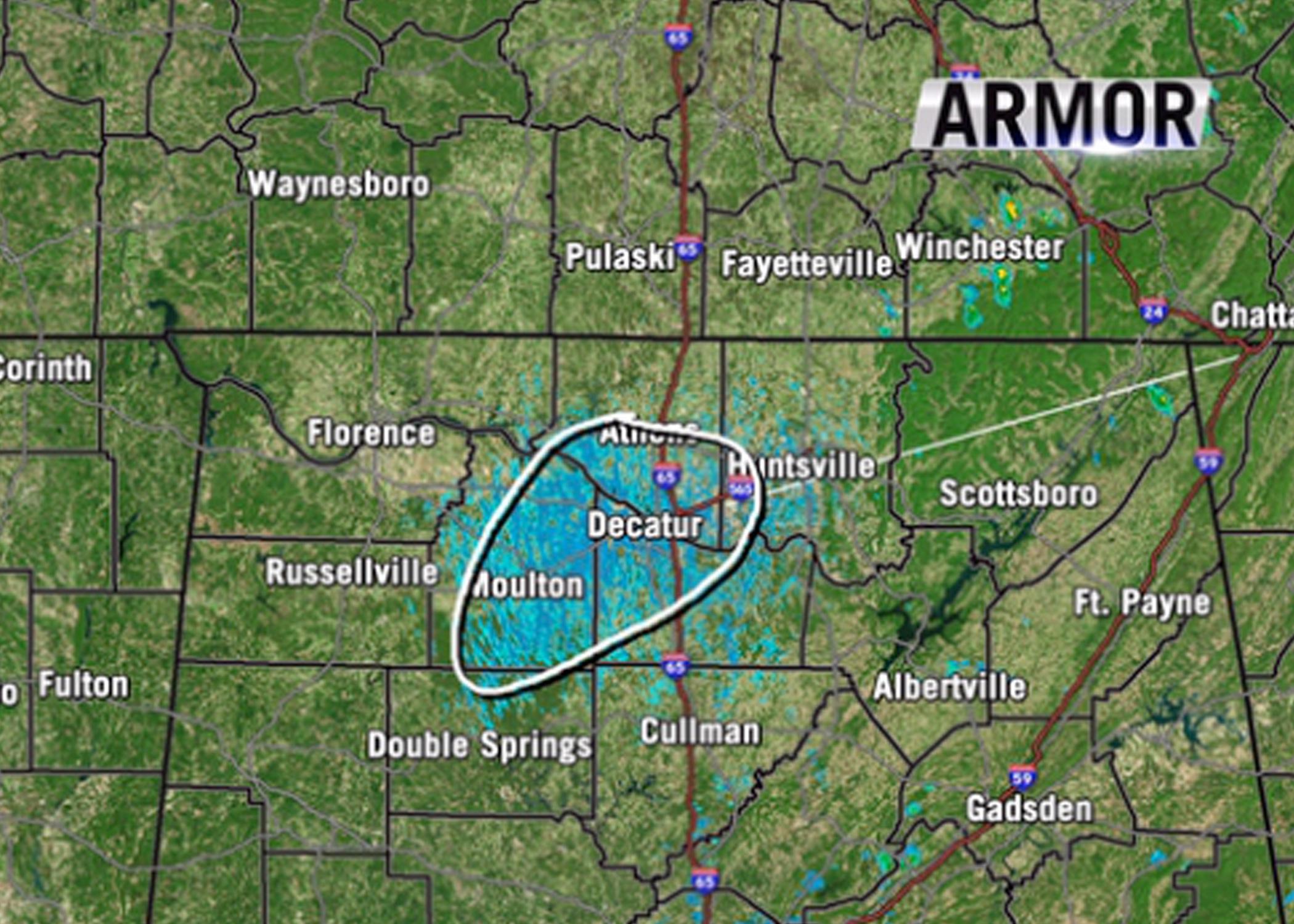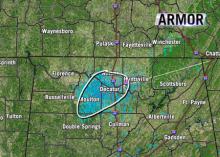Information Possibly Outdated
The information presented on this page was originally released on October 22, 2014. It may not be outdated, but please search our site for more current information. If you plan to quote or reference this information in a publication, please check with the Extension specialist or author before proceeding.
Recent AL weather radar oddity was mayfly swarm
MISSISSIPPI STATE -- Southern storms mean a lot of unusual things show up on weather radar, but swarming insects usually are not the first thing that come to mind.
Jason Simpson, chief meteorologist at WHNT-TV in Huntsville, Alabama and a 2001 geosciences graduate of Mississippi State University, noticed some trends on live radar Sept. 4 that made him and other professionals wonder if they were seeing insects. Colored areas that typically indicated precipitation appeared on screen on a sunny day.
“Based on radar returns, there was a high concentration of some type of flying insects showing up over north Alabama,” Simpson said. “They appeared to be radar-reflective insect swarms.”
He said weather radar often captures patterns that have nothing to do with precipitation. Weather radar can differentiate between precipitation and other things in the air.
“The bioflyers I noticed on Sept. 4 were particularly interesting because they were persistent and abnormally easy to see over the area from Lawrence County northeast to Madison County, Alabama,” Simpson said.
He said as radar technology has improved, it has become easier to detect the presence of insects in the atmosphere.
“Radars emit energy and listen for an echo; no matter what that energy hits, some of it is reflected back to the radar dish,” Simpson said. “Dual-polarity radar sees the vertical and horizontal energy return to the radar and helps us see the orientation, water content and consistency of the ‘targets’ in the atmosphere. That helps us determine whether something is biological, chaff, liquid or ice crystal.”
Simpson contacted the MSU Department of Biochemistry, Molecular Biology, Entomology and Plant Pathology for help identifying what showed up on-screen.
Jeffrey Dean, head of the department, said what Simpson noticed appears to have been a large mayfly emergence.
“I drove through that area about a week after the event and saw enough dead bodies around a couple of gas stations in the Gadsden area to confirm it was most likely mayflies,” he said.
Richard Brown, director of the Mississippi Entomological Museum at MSU, said insect swarms are massive concentrations of individuals.
“Insects swarm for a variety of reasons. Mating swarms occur for many kinds of flies, such as mayflies and love bugs,” Brown said. “Certain insects also swarm in substantial numbers for migration.”
Radar has been used in the past to detect insect migrations. Brown said he has heard of plans by the U.S. Department of Agriculture Agricultural Research Service to use weather radar to track migrating pest insects.
Simpson said he has seen insects on radar for years, but the one in September was the most obvious signature he witnessed on live radar.
“It is not all that uncommon to see swarms like this throughout the warm-season months all over the East and South,” Simpson said. “In fact, one of the first noticeable changes from a harsh winter to warm weather is the appearance of what looks to be a bunch of clutter around the radar. Most of the time, some of that clutter is comprised of bioflyers.”



